A Paris Pilgrimage for His 150th Birthday
A feast everyday in your hearts...
A week ago, I was in Paris, seeking out and experiencing some of the gastronomic footsteps (mouthfuls?) that Crowley would have enjoyed during his time in that beautiful city. While on that trip, I received some very good news about my research that will enable me to share even more delightful tidbits as I continue along this journey. Today would have been Crowley’s 150th birthday, so I wish to share a few bites to commemorate the day.
Most of the research I had completed before my trip focused on his 1908 magickal retirement diary, which became known as The Paris Working—or, in print, John St. John. In it, he documented his every day, from waking to his meals, to the effects his rituals were having upon his person. It was during this very special period in his life that he celebrated his thirty-third birthday. In his introduction to the second edition (Red Wheel/Weiser, ©2006), James Wasserman writes: “The diary is the fundamental tool whereby the individual magician can keep a scientific record of his own perceptions of himself, the first matter of the Great Work.”
I’ve already discussed his love of the many citron pressés he consumed at Café du Dôme—two of them on the day before his birthday. The first was late in the afternoon at 4:55 p.m., after a lunch of rumpsteak aux pommes soufflé (rumpsteak with potatoes), poire (pear brandy), ½ Evian (a famous bottled water company, still in existence), and the three Cs (cigar, coffee, and cognac)” at the Panthéon restaurant, seemingly no longer in existence. Another came later, at 8:22 p.m., during his dinner at the Dôme: “Marennes (oysters), râble de lièvre (saddle of hare), citron pressé.” On this night before his birthday, the 12th of October, 1908, he writes: “It is well that thus should close this eleventh day of my Retirement, and the thirty-third year of my life. Thirty and three years was this temple in building…”
It seemed only reasonable that I should put myself in his place at that bastion of literary greatness. It was highest on my list of Crowley restaurants to visit. And here is where it gets sad: Café du Dôme, which opened in 1898 on Boulevard du Montparnasse—a renowned intellectual and artistic hub, especially in the interwar period, boasting the likes of Hemingway, Matisse, Mondrian, and Cartier-Bresson—is now an overpriced, pale shadow of its former self.
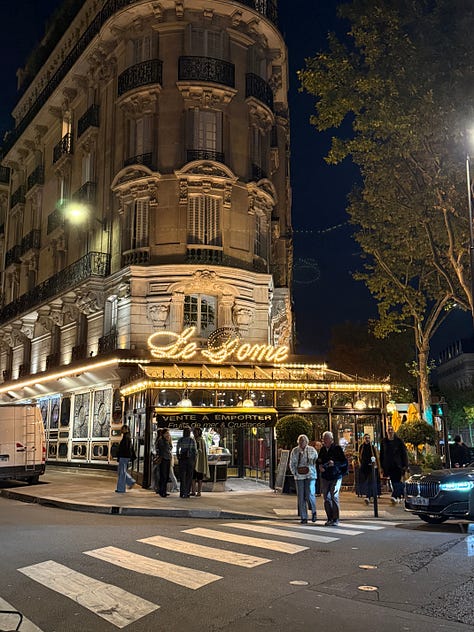

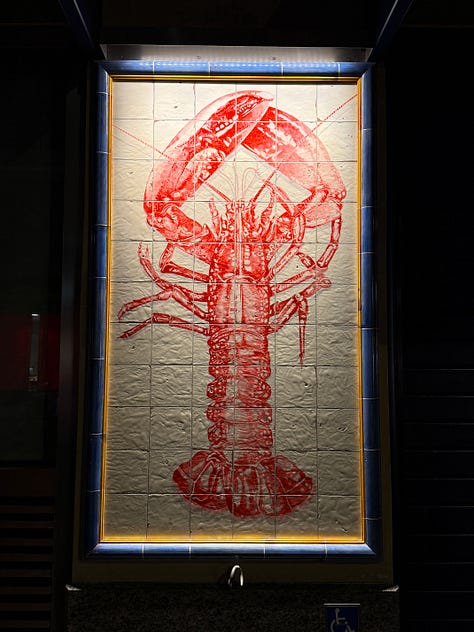
Walking through Montparnasse en route to the Dôme, every surrounding restaurant—including those along Rue Delambre and Boulevard Raspail—was packed with diners. Yet there sat the still-gorgeous Dôme, almost entirely empty save for a single couple conspicuously placed in the front window to give the appearance of activity. The reason? Perhaps, riding on its own historical coattails, the restaurant has forgotten to appease its guests with something affordable. The current menus are nearly double the prices of similar offerings nearby:
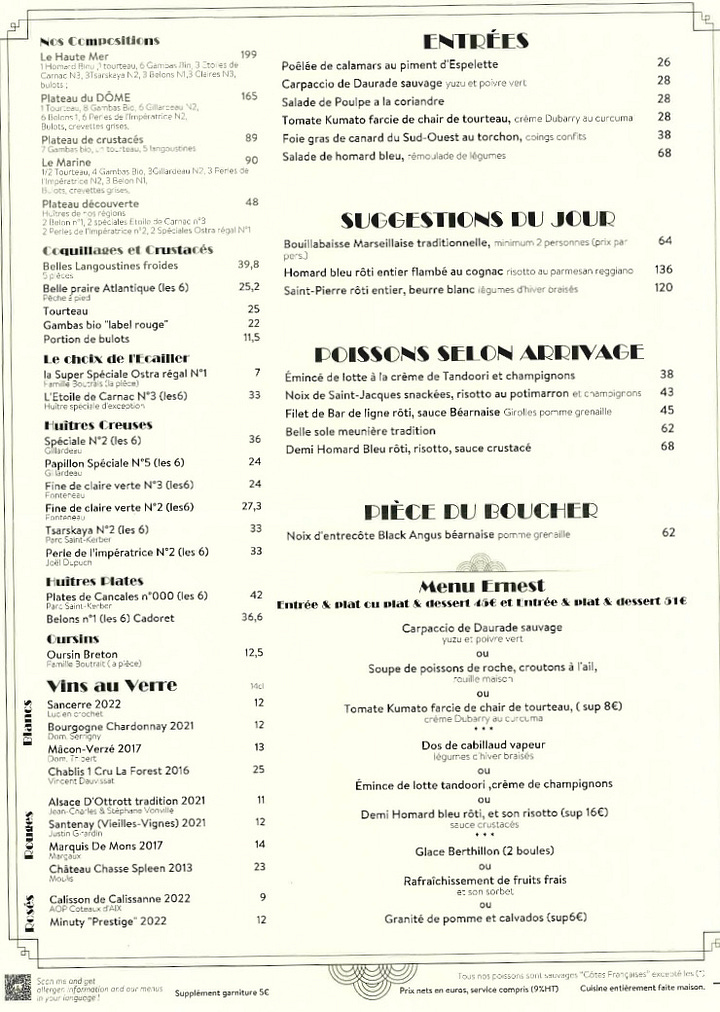
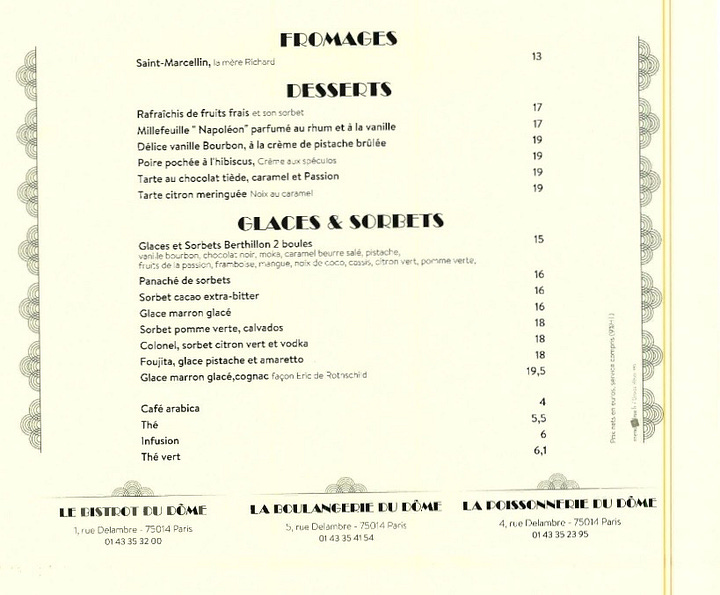
Crowley’s birthday entry is hopeful:
7:55. Awoke from long sweet dreamless sleep, like a young eagle that soars to greet the dawn. 9:20. After breakfast (no notation of what was eaten), have strolled on my way to the studio, through the garden of the Luxembourg to my favorite fountain. It is useless to attempt to write of the dew and the flowers in the clear October sunlight.
The Luxembourg Gardens are indeed a wonder, with their tree-lined walkways surrendering their leaves to autumn—the warm gold, sunny yellow, and fiery orange of the flowers invoking a sunset. The gardens have several fountains, the largest in the center where youngsters race model boats, but the most famous being the Medici Fountain, adorned with sculptures of Polyphemus Surprising Acis and Galatea.
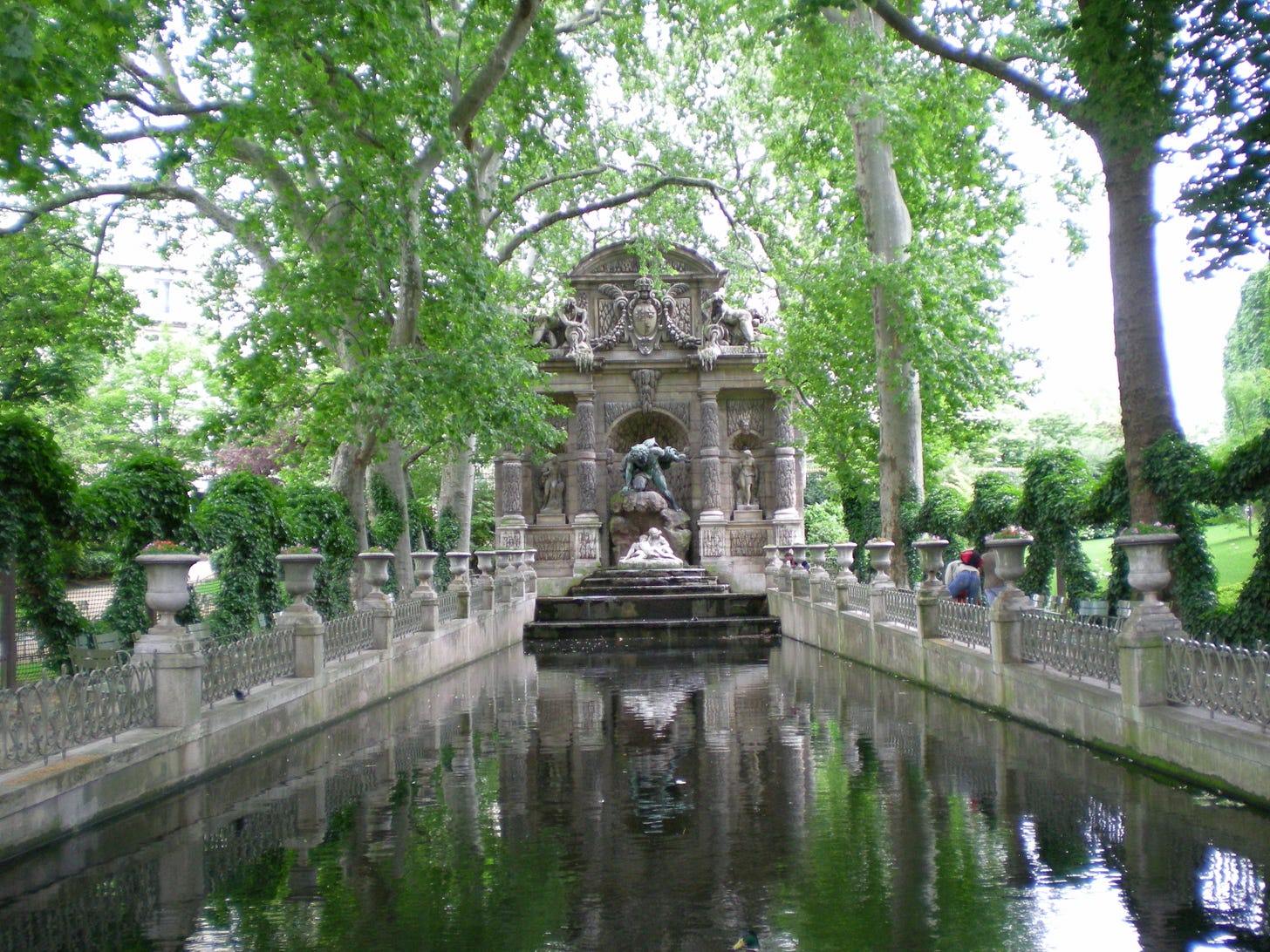
Crowley’s birthday lunch (12:40 p.m.) was at Chez Lavenue, another historical restaurant still in operation, though I abstained (mediocre reviews and exorbitant prices). He seems wistful:
Certain practical considerations suggest themselves. One would have been much better off with a proper Magical Cabinet, a disciple to look after things, proper magical food ceremonially prepared, a private garden to walk in... and so on. But at least it is useful and important to know that things can be done at a pinch in a great city and small room.
He enjoyed a lunch of kidneys, which were “well cooked,” an excellent tarte aux fraises (strawberry tart), and a Burgundy that “came straight from the Vat of Bacchus,” finishing with “Coffee and Cognac [that] are beyond all praise [and] the cigar [being] the best Cabaña I ever smoked.”
At 11:15 in the evening he wrote:
And even there in the Café du Dôme was the glory within me, I therein; so that every time that I failed at a stroke and stood up and drank in the ambrosial air, I was nigh falling for that intense sweetness that dissolved away the soul. Even as a lover swoons with excess of pleasure at the first kiss of the beloved, even so was I, oh my Lord Adonai! Wherefore I am come hither to my chamber to enflame myself in praying at the Altar that I have set up. And I am ready, robed, armed, anointed... 11:35 Ardesco!... (I am enflamed).
Crowley’s Paris was a place of transformation; a city of fountains, cafés, oysters, and revelation. Though much of that Paris has faded into nostalgia and expense accounts, the echo of that magickal autumn in 1908 still lingers in the air around Montparnasse and in the gardens.
Perhaps it’s there, in the last sips of a citron pressé, that we still taste something of Adonai’s ambrosial air.


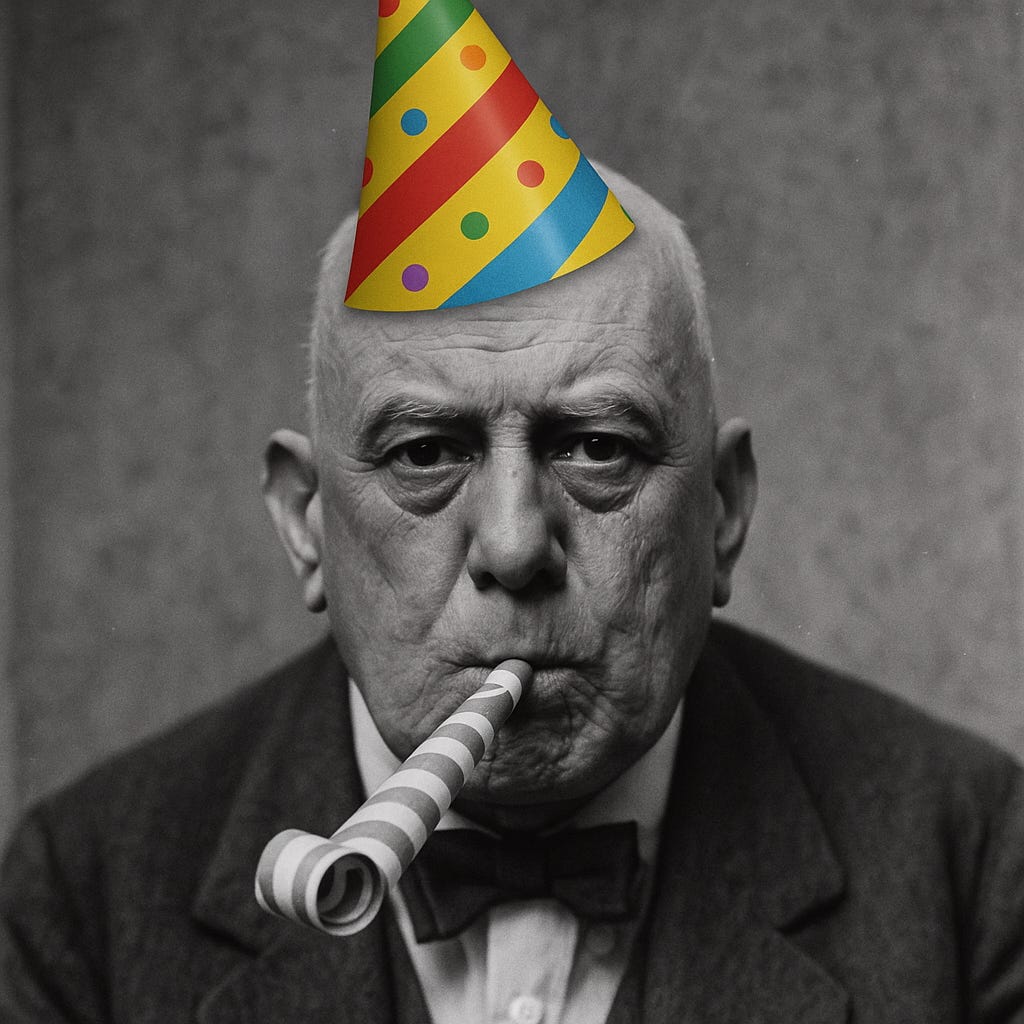
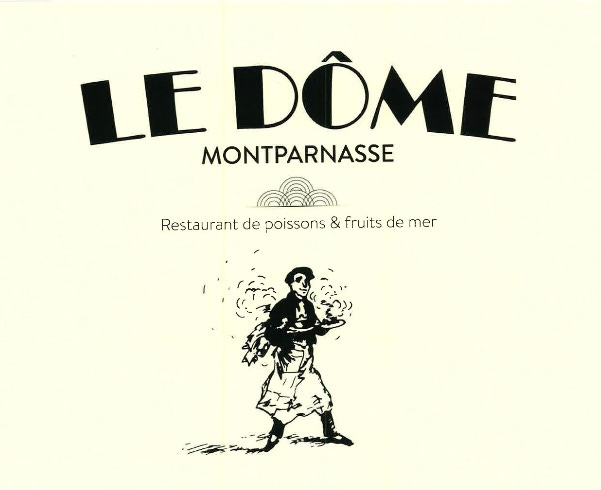
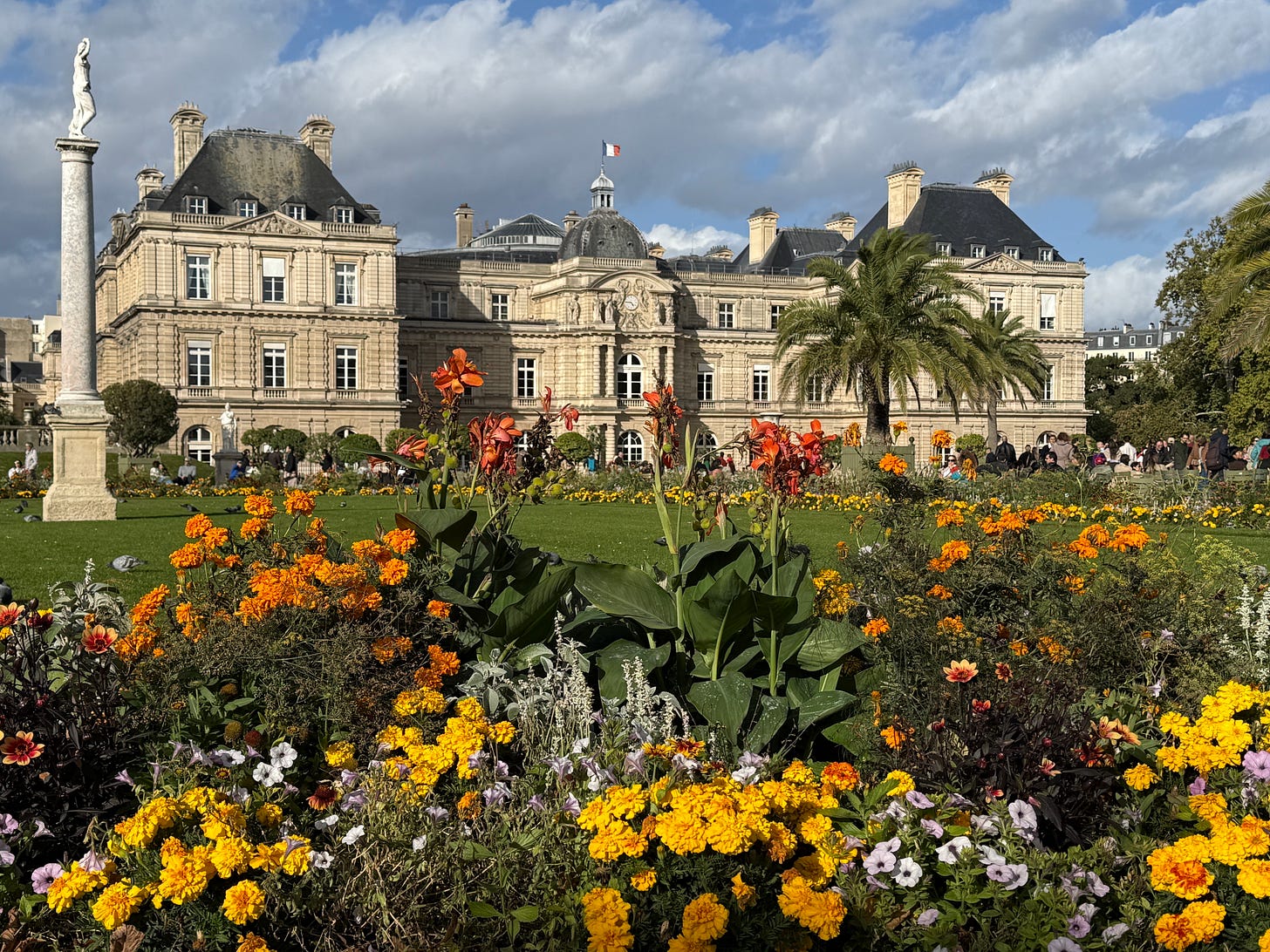
I’m hungry